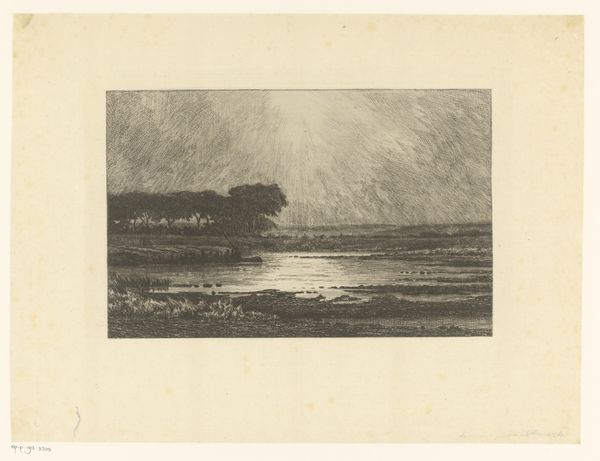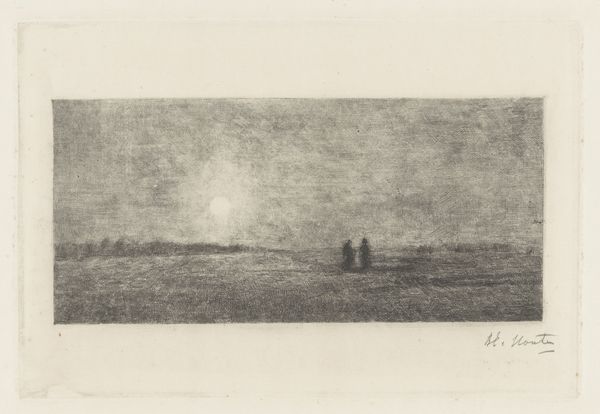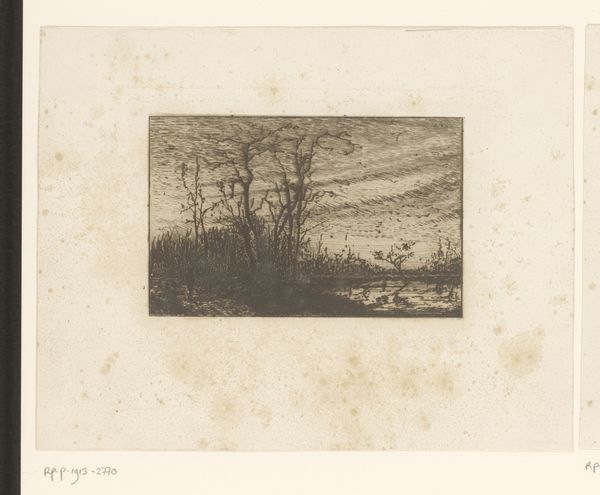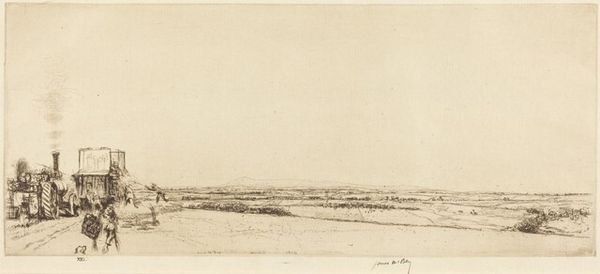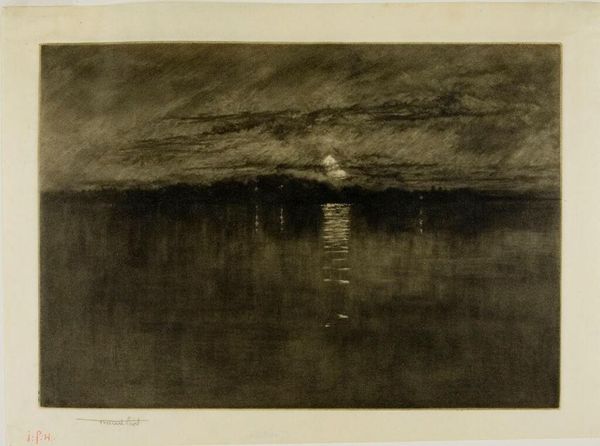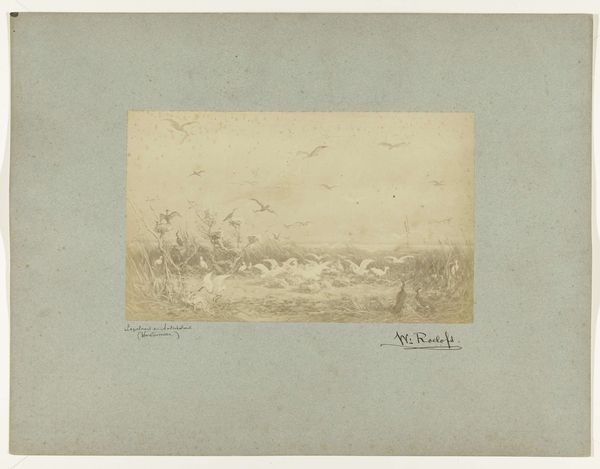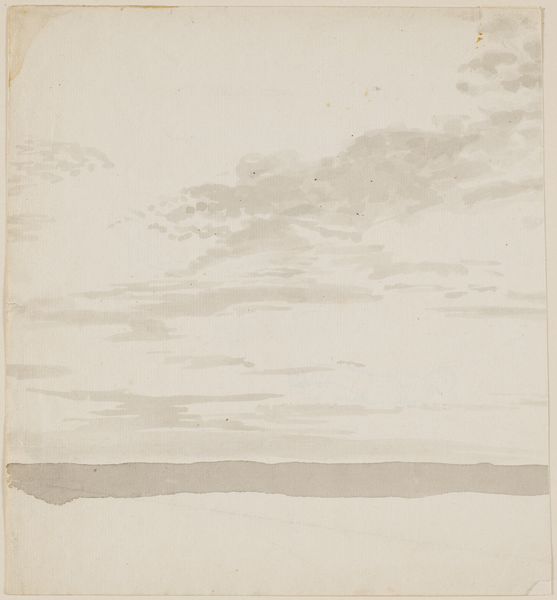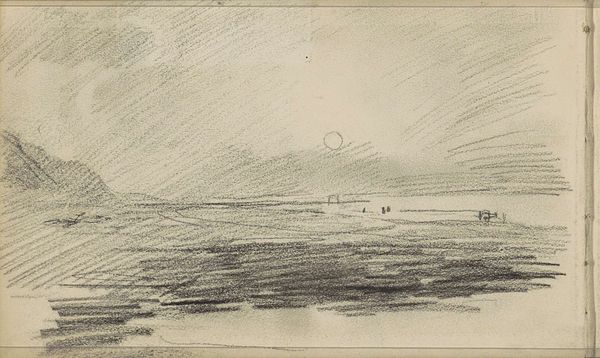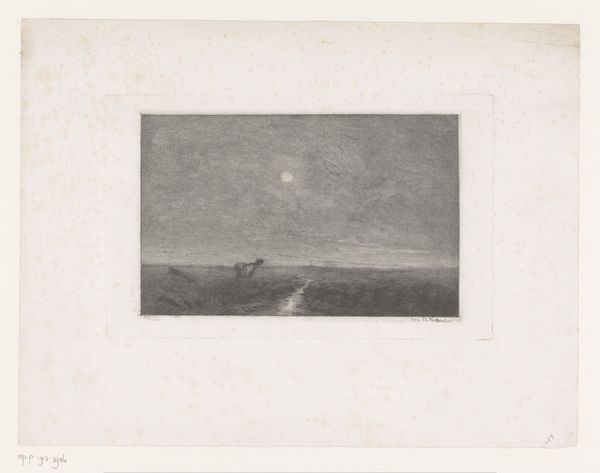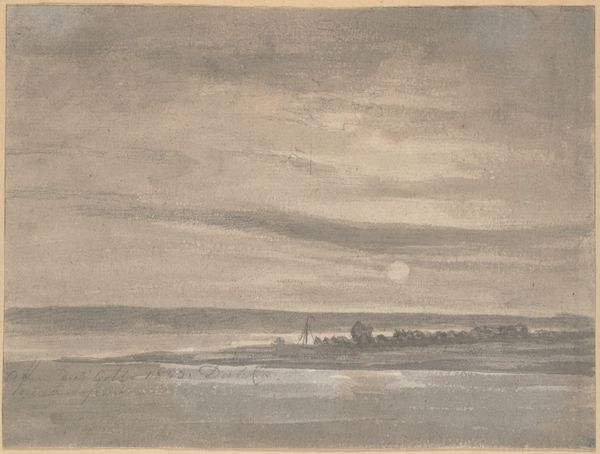
print, etching
# print
#
impressionism
#
etching
#
landscape
#
etching
Copyright: National Gallery of Art: CC0 1.0
Curator: Here we have Theodore Roussel's etching, "Moonrise from the River." It's a fascinating piece. Editor: It evokes a sense of tranquility. The muted tones and the softness of the moon create such a still, quiet scene. I wonder what sort of paper Roussel chose for this print. It looks almost handmade. Curator: Yes, the paper stock adds to the piece. Roussel, a lesser known figure of Impressionism, often played with printmaking techniques to achieve painterly effects. His place within the etching revival and print market of the late 19th century, as it gained acceptance in galleries, tells us much about shifting artistic and institutional validation of media beyond oil painting. Editor: It's amazing how much texture he coaxes out of an etching. Look at the dense layer of reeds in the midground. It makes me think about the physical act of creating such a textured surface with a needle on a metal plate and about how each pull of the print is slightly different depending on the press operator and amount of ink used. I'm curious how his technique reflects, say, his contemporaries, and the labor involved. Curator: Absolutely, these impressions were made during a key time when aesthetic appreciation began to move toward "lower" class forms of labor like this one in its embrace of print. And the imagery – the serene landscape—suggests a sort of escape from industrial labor of the burgeoning urban life. How these images circulate becomes intertwined with class aspiration, especially in London. Editor: That intersection you mentioned makes the moon's positioning particularly interesting to me. Is it deliberately positioned to appear as though superimposed in relation to the reeds? The image asks how does this tranquil moment connect to everyday lives, and perhaps offer a brief, marketable, respite? Curator: An intriguing perspective. Roussel really understood the power of suggestion in these prints. It makes you wonder, what specific locations was Roussel visiting, who was viewing and consuming his prints in what contexts? Editor: It definitely offers food for thought. Reflecting on the materials, technique and wider societal context opens up an even richer appreciation for Roussel's piece. Curator: Precisely. Roussel and his landscapes speak of artistic production and how they occupy society at large.
Comments
No comments
Be the first to comment and join the conversation on the ultimate creative platform.

